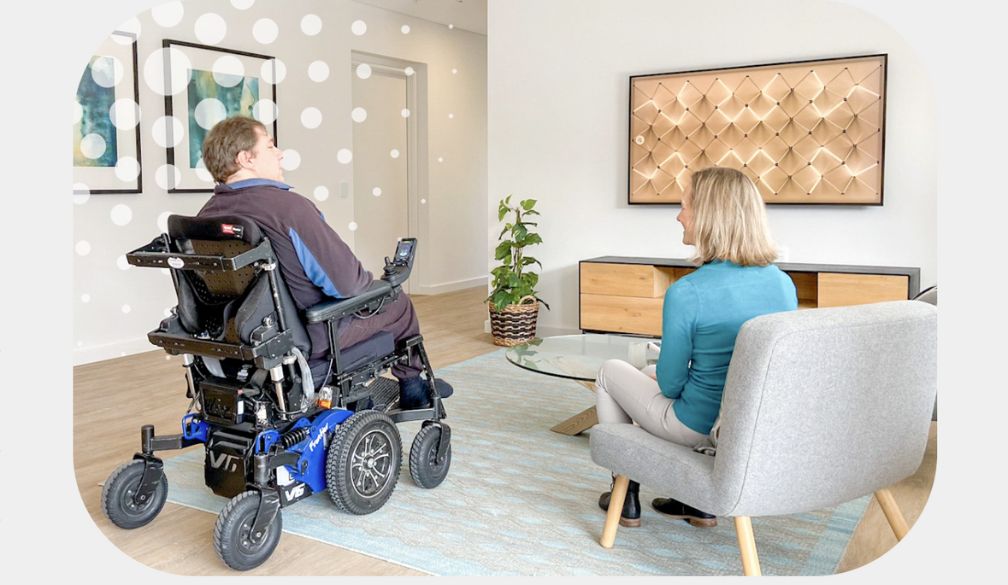What Is The Difference Between SDA and SIL?
- Written by The Times

In Australia, disability accommodation services are governed by specific frameworks and regulations aimed at ensuring the highest standards of care and support for individuals with disabilities.
SDA (Specialist Disability Accommodation) and SIL (Supported Independent Living) play critical roles in disability accommodation. However, while similar, the two are often confused and used interchangeably – and there are key differences between them.
It’s essential for stakeholders – including individuals with disabilities, their families, disability service providers, and policymakers – to understand the differences between SDA and SIL. In doing so, it ensures that everyone can make informed decisions.
In this article we’ll explore the meaning of SDA and SIL, and identify the key distinctions between the two.
SDA: Specialist Disability Accommodation
‘SDA’ stands for ‘Specialist Disability Accommodation.’ SDA is housing designed to meet the needs of individuals who require specialised housing solutions due to their disability.
SDA aims to provide suitable living arrangements that enable individuals to live as independently as possible while receiving the necessary support and assistance.
The funding for SDA is allocated separately from support funding under the National Disability Insurance Scheme (NDIS).
SDA incentivises the market to develop high-quality, modern, accessible, and well-designed housing options for participants whose plans include SDA funding.
Payments for SDA funding are made directly to providers to cover the construction, modification and ongoing maintenance costs. Participants contribute a reasonable rent and cover everyday living expenses, such as electricity bills.
Key Aspects of SDA:
- Accommodation Types: SDA includes a range of housing options such as group homes, apartments, or specially designed houses that cater to the specific needs of individuals with disabilities. This housing usually includes modifications and features that enhance accessibility and safety.
- Funding and Funding Models: SDA funding is typically provided through the National Disability Insurance Scheme (NDIS) in Australia. The funding models for SDA focus on the physical aspects of accommodation, including capital costs, construction, and ongoing maintenance, rather than the support services provided to the residents.
- Design and Accessibility Standards: SDA properties must meet specific design standards outlined by the NDIS, ensuring they are accessible and suitable for individuals with disabilities. These standards cover aspects such as mobility, sensory, and environmental considerations to support independent living.
- Tenancy and Support Coordination: While SDA focuses on the accommodation itself, tenants may receive additional support services through other NDIS funding streams or service providers. Coordination between accommodation providers and support service providers is crucial to ensure comprehensive care and assistance for residents.
SIL: Supported Independent Living
Supported Independent Living (SIL) refers to the support services provided to individuals with disabilities living in their own homes or in shared accommodation settings. SIL focuses on enabling individuals to live as independently as possible, while receiving the necessary support tailored to their specific needs. Unlike SDA, SIL funding covers the support services and staff required to assist individuals with daily activities and personal care.
Key Aspects of SIL:
- Support Services: SIL funding covers the cost of support workers who assist individuals with disabilities in various aspects of daily living, including personal care, household tasks, social activities, and community participation. The level of support provided is based on the individual's assessed needs and goals.
- Choice and Control: SIL aims to empower individuals with disabilities, by giving them choice and control over their support arrangements. This includes selecting support workers, determining the type and frequency of support needed, and participating in decision-making processes that affect their living arrangements.
- Individualised Support Plans: SIL services are based on individualised support plans developed in collaboration with the individual, their family, and support professionals. These plans outline goals, preferences, and specific support needs to ensure personalised care and effective service delivery.
- Quality and Compliance: Providers of SIL services must adhere to quality standards and regulations set by the NDIS Quality and Safeguarding Framework. This includes ensuring that support workers are trained, competent, and responsive to the needs of individuals with disabilities.
Integration and Collaboration
While SDA and SIL serve different purposes within the disability accommodation sector in Australia, they often work in tandem to provide holistic support to individuals with disabilities.
Integration Points:
- Collaboration in Service Delivery: SDA providers and SIL service providers often collaborate to ensure that accommodation settings are conducive to providing effective support services. This collaboration includes coordinating care plans, monitoring resident well-being, and addressing any issues that may arise.
- Funding Considerations: Navigating the funding arrangements for both SDA and SIL requires clear understanding and coordination between accommodation providers, support service providers, and funding bodies such as the NDIS. Ensuring transparency and accountability in funding allocation is essential for sustainability and quality of service provision.
- Regulatory Compliance: Both SDA and SIL services must comply with regulatory guidelines and quality standards established by the NDIS. This includes ensuring safety, accessibility, and adherence to best practices in disability support and accommodation.
The Differences Between SDA & SIL: A Summary
SDA and SIL play integral roles in providing disability accommodation and support services in Australia. While SDA focuses on specialised housing solutions that meet the physical needs of individuals with disabilities, SIL focuses on personalised support services aimed at promoting independence and quality of life.
Understanding the distinct roles and funding mechanisms of SDA and SIL is essential for stakeholders involved in the disability accommodation sector to effectively meet the diverse needs and preferences of individuals with disabilities and ensure they receive the highest standards of care and support.

















